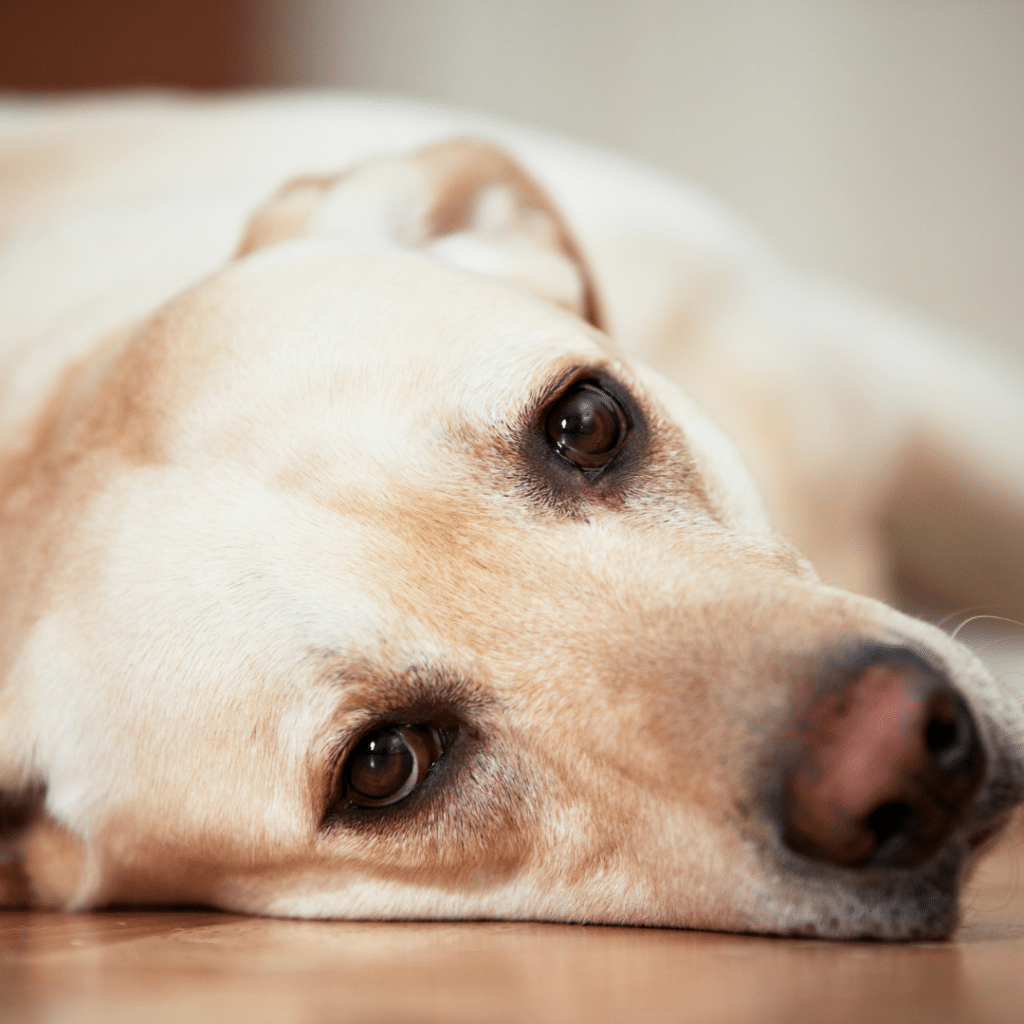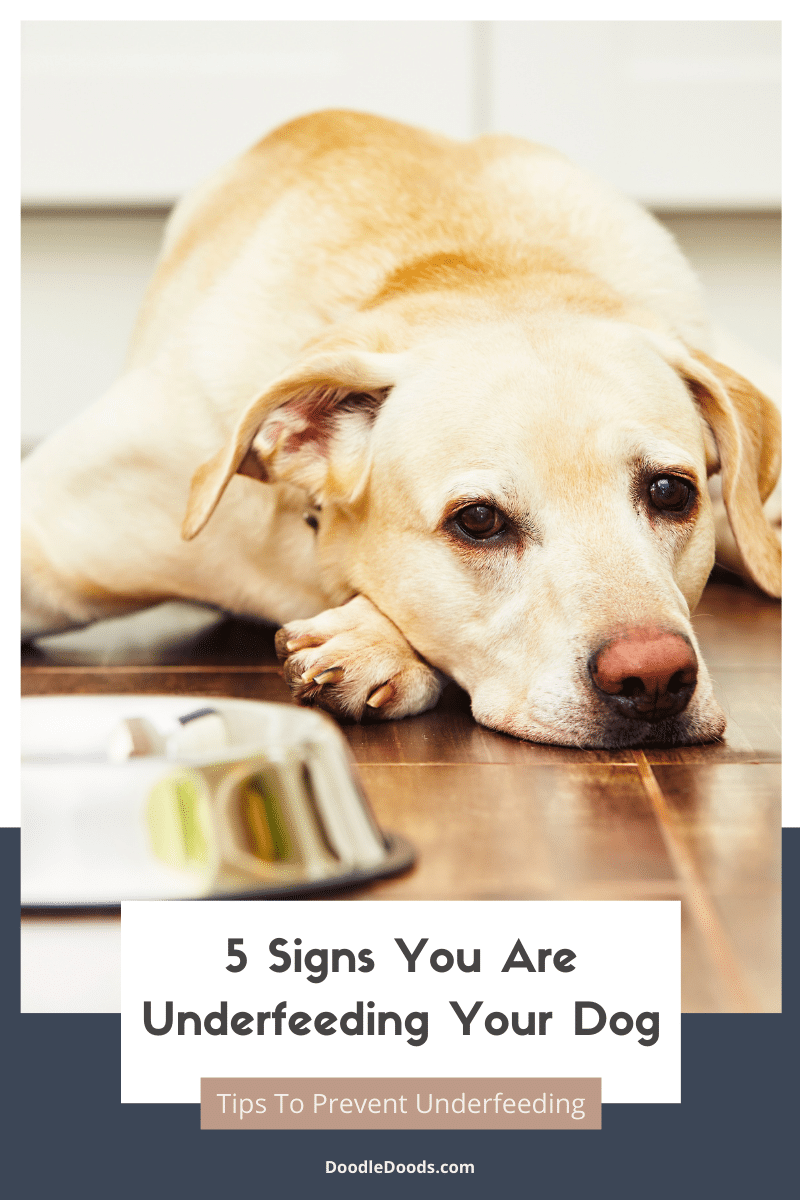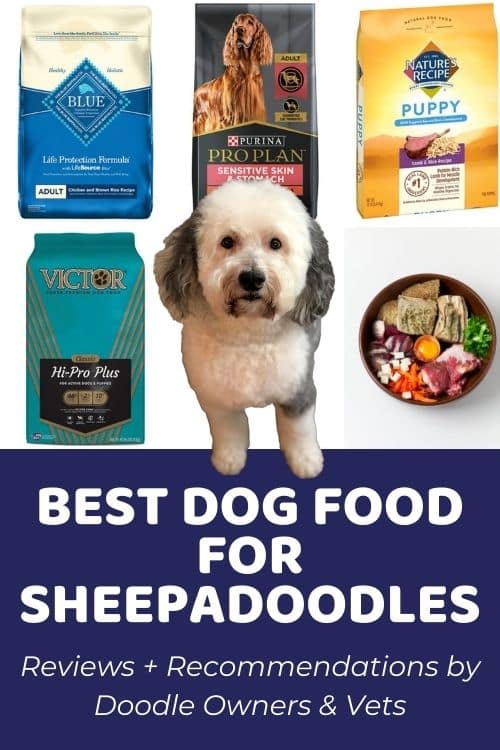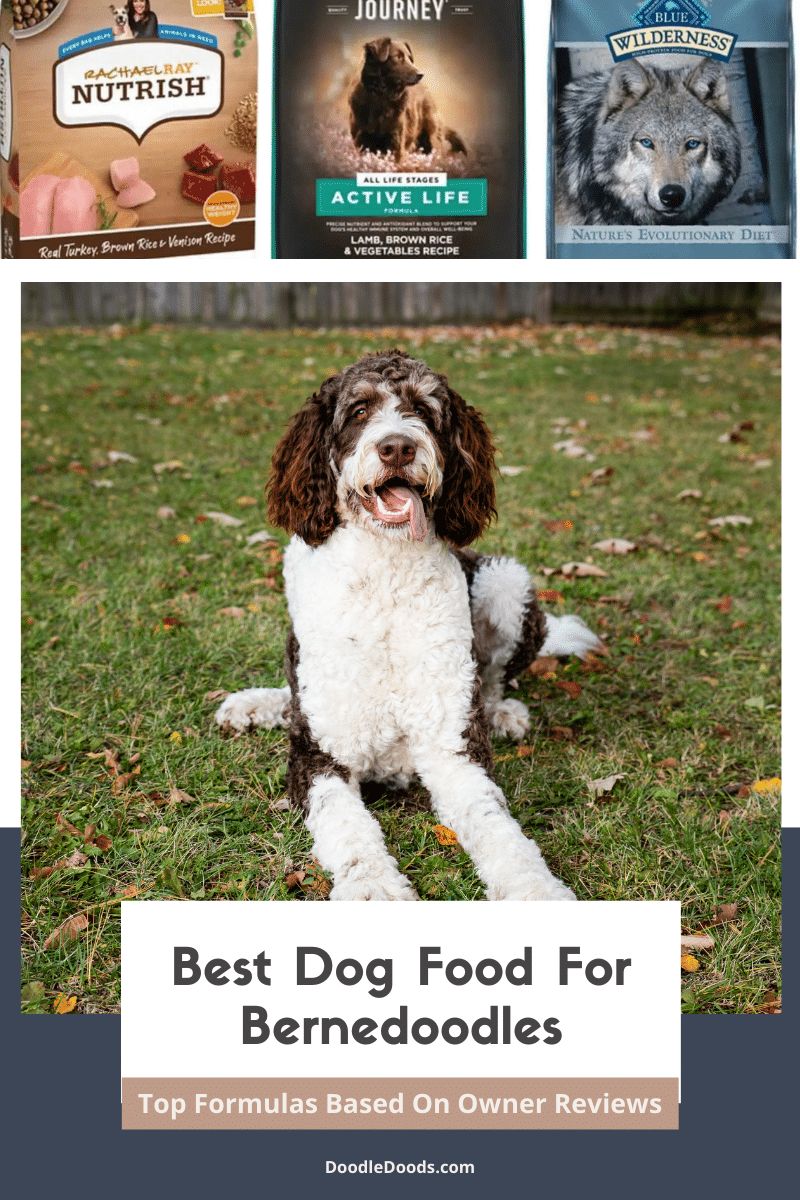With obesity being the biggest issue plaguing the country’s pets (a staggering 56% of them are overweight), dogs being underweight is not something really spoken about. However, given that it carries its own serious health risks, it is something for owners to be aware of. You might be worried you aren’t feeding your pup enough or that they simply aren’t eating enough of what you are giving them. Even way, it’s worth a discussion.
On the whole, dog owners, especially newbie ones, tend to greatly overestimate how large their pet’s food portion sizes should be (hence the obesity stats). It’s certainly true that gauging just how much you should be feeding your pal is no easy task as this varies wildly by their size, age, breed, and various environmental factors too. Yet, this is a vital part of pet care. In this article, we’ll take a look at some signs you are underfeeding your dog, signs your pet isn’t getting enough nutrition, and what you can do to ensure that this isn’t the case going forward.
Table of Contents
- Malnutrition Risks on Canine Health
- Signs Your Dog Isn’t Getting Enough of The Right Stuff
- Knowing The Difference Between Hungry And Greedy
- Creating The Perfect Meal Plan For Your Pup
- Signs You Are Underfeeding Your Dog: Frequently Asked Questions
- Signs You Are Underfeeding Your Dog: Final Thoughts
Malnutrition Risks on Canine Health
Diet obviously plays a massive role in the ongoing well-being of your pet. Malnutrition – where your pup is not getting the proper levels of proteins and macronutrients from their diet – can manifest itself in a number of different health outcomes, including:
- Bone density problems
- A weakened immune system
- Various heart conditions
- Abnormal skin growths
- Reproductive issues
- IBS and other digestive disorders
- Muscular dysfunction
- Problems with coordination
- Neurological issues
Signs Your Dog Isn’t Getting Enough of The Right Stuff
While all of the above issues sound pretty bad, chances are, if you’re feeding your dog every day and they are taking in at least a little of what you’re giving them, you don’t have to worry too much about their health. After all, it’s unlikely your pet has reached the point of emaciation without you noticing (unless you adopted them like this, in which case you should be under veterinary guidance in terms of their diet). That being said, if you suspect food issues, there are a few things to be on the lookout for:
Clearly Visible Ribs
It goes without saying that if your pet is looking a little on the thin side, chances are they aren’t getting sufficient calories to offset those they are losing through exercise. In fact, visible ribs are often seen in very young and sporty dogs. If this is the case with your pal, but you’re not seeing any of the other symptoms on this list, then you might simply opt to switch to a kibble designed specifically for more active pups. We like VICTOR’s Classic Hi-Pro Plus Formula with its higher-than-average protein and fat, as well as calorie content.
Brittle Coat And Hair Loss
A less obvious sign that your pup isn’t eating enough or that you’re not feeding them the best kibble for them will be seen (and felt) in their coat. It will be much duller than usual, and you might notice that it looks patchy with thin areas and bald spots. At the same time, you’ll be finding more hair about the house. This will make it easier to spot that your pal’s skin is dry and flaky. They may even have ongoing issues with hot spots and other skin conditions that make them furiously scratch, further exacerbating their hair loss.
Low Energy And Lethargy
When your dog’s diet Is low in essential proteins and, most importantly, fats, they simply aren’t going to have as much enthusiasm for life as they should have. If your previously happy hound suddenly couldn’t care less when you get home from work or take out their leash for walkies, this can be a clear sign of malnourishment. On the other hand, other factors can also have this effect. For instance, high temperatures can make your pup want to find somewhere cool and get their head down for a few zzzzs.

Flatulence And Infrequent Bowel Movements
Dietary issues are obviously going to have an impact on your pet’s digestive system. At the same time, fewer poops are definitely a clear sign that they are not getting enough food. Flatulence and unusual bowel movements (harder or softer than usual, for example) can be a symptom that the kibble you are currently feeding your pet isn’t doing them any favors. It might be a simple case of food sensitivities rearing their ugly head, but then again, it may also be the case that you are dealing with a particularly low-quality kibble.
Obesity
Just because a dog looks overweight doesn’t mean they are getting the right nutrition. In fact, chances are it’s quite the opposite. If you’re feeding your pet according to the manufacturer’s guidance, but they are still piling on the pounds, the issue might be with the kibble. Non-nutritional filler carbs are often used as a way of keeping costs low. As (unlike us) dogs get most of their energy from fats, their carbs requirements are very minimal. That’s why some pet parents prefer wet food for their dogs. However, decent kibbles have far fewer of these fillers. To know what’s what, you’ll have to check the label.
Knowing The Difference Between Hungry And Greedy
Many dogs have extremely healthy appetites. Some breeds commonly combined with Poodles (Labrador and Golden Retrievers, for instance) don’t have the reputation of walking garbage disposals for nothing! If you’re basing the idea that you’re underfeeding your pet purely on the fact that they tend to gobble down their food as soon as you place their dish on the ground, you should know this isn’t always the most reliable indicator.
You’re likely more than aware by now that your pet can be very good at manipulating you into giving them what they want. This goes doubly for food and desirable treats. A single look into those pleading melting chocolate eyes is usually all it takes for you to cave. However, most treats, especially designated canine ones, are far higher in calories than you would imagine, given their smaller size. They could certainly impact your hound’s appetite for their food, especially when they view it as not quite as tasty!
Boredom could be another reason your fur baby is bothering you for treats. Much in the way that people head to the fridge when they haven’t got anything else to do, lack of sufficient physical and/or mental activity could have your dog convinced they must be hungry. Boosting their exercise levels with longer walks or more frequent trips to the park can help with this – as can providing them with toys that get them thinking to keep them entertained in between.
That said, it could well be that you simply aren’t feeding your dog as much as they need based on their specific requirements. They could actually be really hungry, and for good reason. With the best will in the world, it isn’t always easy to decipher pets. If you’re struggling to distinguish between your dog’s need and desire for food, you need to check that you are feeding them the right thing and enough of it by doing the following:
Being Aware of The Healthy Weight For Your Type Of Dood
As different dogs have wildly differing body shapes, and given that Doodles often inherit the Poodle’s athletic long legginess, these dogs can sometimes look on the thinner side. In most cases, though, they are actually at a perfectly reasonable weight for the kind of dog they are. That’s why it pays to be aware of the “ideal” stats for the dog you have. As Doodles are mixed-breed dogs, this can be a little trickier than it would be for their purebred ancestors, that have usually been around for decades, if not longer.
Luckily, though, as Doodles continue to rise in popularity, and there are more of them about in the world, we are starting to get a better understanding of their ideal size and weight too. This is based on ever more reliable information given by owners and better knowledge among breeders. So now there are multiple online resources for you to use, including our very own handy size chart and growth calculator articles. This gives specifics for many of the more popular Doods (of all the different sizes). The charts can also be used to monitor your puppy’s growth rates right through their earliest months and up until they reach their mature size.
Checking The Ingredients List And Nutritional Breakdown of Kibble
As individual dogs vary greatly in their calorie and nutrient needs, kibbles vary in much the same way in their nutritional content. Often this is done purposefully. For instance, a brand may have foods aimed at puppies and older dogs, smaller and larger ones… Yet, there can also be a fair amount of variation between brands aimed at the same age and size of dogs based on the individual quality of their kibble. That’s why it’s good to have an understanding of exactly what your pup needs from their food.
According to The Association of American Feed Control Officials (AAFCO), an independent organization that regulates feed, dog food should be at least 18% crude protein and 5.5% crude fat for adult dogs. For puppies and pregnant/lactating females, these figures are 22.5% protein and 8.5% fat. Remember, though, that these are bare minimum numbers. Most kibbles contain around 22% protein and 15% fat as standard – and this seems to work well for most adult dogs that are exercised moderately. For more active canines, you could see as much as 30% protein and 18% fat.
If In Doubt, Chat With The Vet
If you’ve tried to tempt your fussy pooch with just about every kind of food out there – with no joy in encouraging them to eat it – getting them checked out wouldn’t be the worst idea. It might very well be that a health condition is impacting their appetite. If nothing else, your vet might be able to provide some helpful advice on encouraging your dog to eat a little more based on the specifics of their lifestyle and routine or the food brands that could work for them.
Likewise, if you’re following the kibble manufacturers guidelines down to the letter, and your hound is happily gulping it down and yet continues to lose weight or doesn’t seem to gain any, it could be that there’s a medical condition to blame. Otherwise, the vet might be able to recommend a higher calorie, protein, and fat formula that might be more suited to your pet – especially if they are on the more energetic side. This way, you’ll know they are getting exactly what they need to remain healthy.
Creating The Perfect Meal Plan For Your Pup
Once you’ve established there are no medical reasons behind your pup’s lack of appetite or inability to gain weight; it’s time to focus on putting together a meal plan that will work for them. In doing this, you’ll need to factor in the following:
Their Age And Weight
We’ve already touched on the differing life stage kibbles based on a dog’s specific requirements when they are younger, older, and pregnant. Picking up the best one to describe your dog should be super simple as most brands advertise who the food is for right there on the front of the bag. Look for higher calorie, protein, and fat ones for younger and pregnant dogs; their bodies are working a lot harder. There will also be a significant difference in the kinds of nutrients included – ones required to support growth compared to ones that can ease older dogs’ aching joints.
Size is also a key factor, not just in what and how much you feed your dog but how often too. Surprisingly, littler dogs require more calorie-dense foods due to a faster metabolism. For this reason, and given how little their stomachs can hold, they need to be fed more regularly – think three or four times a day rather than the standard two. Likewise, growing puppies need to be fed more often than adult dogs. Be sure to feed them at the same time each day so they learn to know when their food is coming. If you’re having problems with knowing how much to put down, our handy dog calorie counter is a great place to start.
Their Activity Levels
Once you have an understanding of the base level amount of food your pup requires based on the above, as well as instructions provided by the manufacturer that account for the specific nutrients of their kibble, you can make adjustments from there based on your pet’s lifestyle. This will also be dictated, in some part, by their age, as younger adult dogs tend to be somewhat boisterous than older ones. If your pup is on the very active side, it might be the case that you need to feed them more, but be careful with this, as the level to which it helps depends on the nutritional content of the food in question.
With a very sporty hound of a working animal, you might want to pick a specifically designed kibble, such as Purina Pro Plan Sport. Not only is this a higher-calorie option, but it also contains more protein and fat than other foods. You can ensure your pal is getting more of the stuff that they need without being fed too much of the stuff they don’t – such as those pesky filler carbs. On the other hand, if your four-legged friend is starting to slow down a bit, a lower-calorie food like Blue Buffalo Life Protection Formula Senior will enable you to keep portion sizes the same while avoiding rapid weight gain.
Seasonal Changes
If you live in a place with fairly extreme winter and/or summer patterns, then this will also have an impact on your dog’s appetite. Part of this is to do with how temperature and daylight hours signal the brain. In spring and summer, it’s more likely that your pup will have a reduced appetite because their brain is telling them they don’t need to worry so much about stocking up on the calories. Alongside this, on those really hot days, your hound will more likely be found lazing about in some shaded corner of the garden rather than rushing about fetching their ball or trying to get you to play with them.
The winter, however, sees an increase in appetite due to hormones shifting and encouraging more food-seeking actions. In the dog’s period of evolution, food was far more scarce in the winter, and so they learned to gobble down everything they could find – this is a behavior that lingers today. The issue with this is, today; obviously, food isn’t scarce, but exercise just might be. If you’re dealing with snow, ice, and plummeting temperatures, it’s unlikely that you’ll be wanting to hang around the park quite as long as you would in the summer. What this means is that your dog could start to quickly put on weight and, so adjustments will be needed again.
Signs You Are Underfeeding Your Dog: Frequently Asked Questions
There is no one set amount of food for every dog. Instead, their dietary requirements will depend on various factors, including their size, age, lifestyle, and whether they have any medical conditions. It will also be determined by the type and nutritional content of the food you are giving them. When in doubt, it’s best to follow the manufacturer’s guidance.
If your pet is not getting enough food or nutrients from their diet, they may resort to begging, counter-surfing, or otherwise stealing food. Worse, they could take to scavenging for scraps out on the street. While the former issues may annoy you more, the latter ones are the riskiest. You don’t know what your dog might choose to gulp down and what it could do to their insides.
When your puppy rushes down their food and looks at you with begging eyes, it’s all too easy to give in and fetch them a little more. However, this is not a good habit to get into. As long as you’re sure that you are feeding your puppy enough and that the kibble is one you can trust, then you’ll have to resist their pleading looks and redirect their attention.
Most often, when a dog acts like they are starving, they are simply being greedy. Many breeds will happily eat and eat and eat as long as you keep giving them something they’re interested in. Instead of looking at their actions, be aware of some of the physical indicators that your dog isn’t getting enough food, such as being able to see their ribs.
Many pups do have a “feast or famine” mentality when it comes to food and will keep eating well beyond the point they need to. It falls to their owners to ensure they get the right amount of food to sustain them and that it is being presented throughout the day at regular enough intervals to reassure them that they’ll never go hungry.
Signs You Are Underfeeding Your Dog: Final Thoughts
If you suspect your dog isn’t getting enough food for whatever reason – be it that you might not be putting down enough for them or that they are particularly fussy – this is certainly worth looking into. Malnutrition can have some pretty serious consequences for canine health. However, most of these tend to be long-term issues, so if you can find a way to get your dog the nutrition they need, you’ll be unlikely to see any of these.
Work with the tools you have, including our calorie calculator and food manufacturer’s guidance on how much to feed your dog depending on their weight, and you’ll know you’re doing your part. However, if your pet continues to refuse to eat what you’re giving them, it might be worth chatting with your vet, who can advise you on your next steps.
Learn How to Care for Your Doodle Puppy!

Perfect for first-time Doodle parents, get ALL your questions answered, including questions new Doodle parents don’t even think to ask.
Plus, get $700 worth of Bonus Materials for FREE, including:- Doodle Parenthood Community and Support Group ($190 value)
- Doodle Puppy Growth Tracker ($20 value)
- EMERGENCY Cheatsheet: When To Call The Vet Immediately ($50 value)
- HELP! Button ($145 value)
- And SO MUCH MORE!









